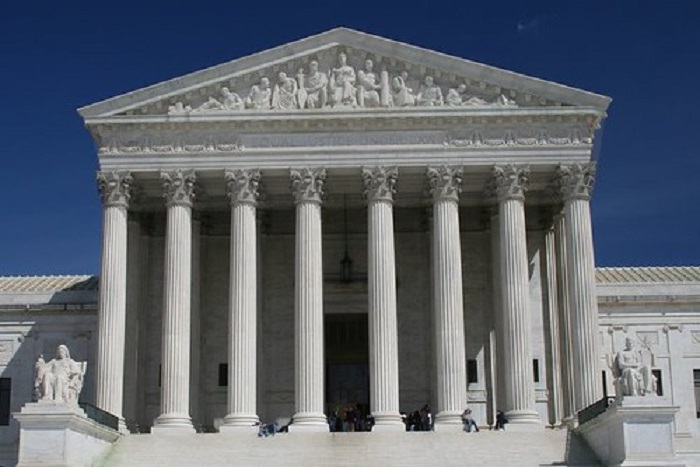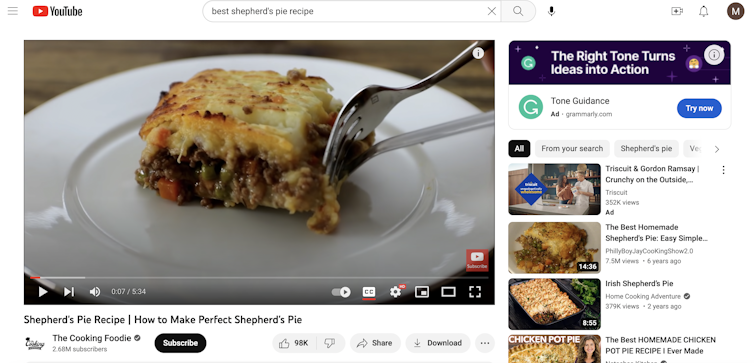
Supreme Court unlikely to ‘break the internet’ over Google, Twitter cases – rather, it is approaching with caution.
“These are not, like, the nine greatest experts on the internet,” noted Justice Elena Kagan – a reference to herself and fellow colleagues on the Supreme Court.
Depsite this, the justices are being asked to negotiate complex arguments that could have wide implications for online providers and ultimately everyone who uses the internet. Their rulings in two cases argued before the court on Feb. 21 and Feb. 22, 2023, could force social media companies to change the way they do business. So, will the Supreme Court “break the internet,” as some have suggested? The Conversation asked Michael W. Carroll, a cyberlaw expert at American University, to explain what is at stake – and how the justices appear to be thinking about the cases.
 Can you talk us through the two cases?
Can you talk us through the two cases?
The justices are looking at two separate cases – Gonzalez vs. Google and Twitter vs. Taamneh – that arise out of the same lawsuit. They are being argued separately because they revolve around the interpretation of two different laws.
Both cases result from terrorist attacks. The Google case was brought by the family of Nohemi Gonzalez, an American woman killed in the 2015 attack by the Islamic State group in Paris. The death of a Jordanian man in a 2017 attack by the terrorist group in Istanbul forms the basis of the Twitter case.
What both have in common is the claim that social media platforms played a role in the organizing of the attacks. In particular, it was argued by lawyers for the two families that Twitter and YouTube, owned by Google, amplified the Islamic State group’s recruiting and fundraising messages.
Central to this argument is that the social media platforms used algorithms that boosted content to those who may be interested in the Islamic State group’s content.
 How do the two cases differ?
How do the two cases differ?
In the case of Google, the company is saying it cannot be held responsible because it is protected by Section 230 of the Communications Act. Section 230 holds that no provider of an interactive computer service shall be treated as the publisher or speaker of information provided by a third party. Google’s lawyers argue that treating YouTube as the publisher of Islamic State group videos would contravene Section 230.
Complicating matters, however, is the definition in the act of what an information content provider is. It is defined as a person or entity responsible for creating or developing content “in whole or in part.” The plaintiff in Gonzalez is arguing that in promoting Islamic State group videos through thumbnails on the platform, YouTube is responsible for content creation and, as such, can be held responsible.
As law professor Eric Schnapper, representing the Gonzalez family, argued to the justices: “I type in ISIS video and they are sending me to a catalogue of thumbnails which they created.”
The Twitter case is not centered on Section 230. Rather, at question is whether social media platforms can be seen to be “aiding and abetting” terrorism by not doing enough to take down Islamic State group content and by recommending the terrorist organization videos through its algorithms. Doing so would represent a violation of the Anti-Terrorism Act of 1990, as amended.
 What are the possible implications?
What are the possible implications?
Although I don’t subscribe to some of the hyperbole – no matter what the justices rule, they are not going to “break the internet” – the stakes are actually quite high for social media companies. And this is largely due to scale.
This could be a huge issue for social media providers because so many people use their products. At the moment, Section 230 provides social media firms broad, but not blanket, immunity against prosecution for the actions of individuals using their services. It doesn’t protect platforms if they knowingly promote and circulate criminal content such as child pornography, but it does protect them from a lot of other lawsuits.
In fact, Congress specifically designed Section 230 in this way, knowing that the defamation laws that cover traditional media such as newspapers were unworkable on social media. Instead, under Section 230 social media platforms are treated more like phone services – and phone companies are not held accountable for what is said over their service.
If the justices interpret Section 230 in a similar fashion, then not much will change. But if they side with the plaintiff, that could open up social media providers to lawsuits regarding content posted by individuals and groups.
 How would that affect the way social media operates?
How would that affect the way social media operates?
That would depend on how tech companies respond – would they change the way their platforms work? And, if so, how?
It could change the relationship between users and content, as well as the usefulness of social media. Or it could just mean that social media companies need to tweak the way they present recommended content – so instead of a thumbnail of suggested videos, you just get a hyperlink.
But a big question went largely unanswered in the oral arguments: If you open up the door to litigation, where would it end? No one gave the justices an answer on that, which by my reading of the oral arguments appeared to make the justices a little nervous. The fear seemed to be they may make what seems to be a small tweak to the law that ends up having large consequences.
 What was your reading of where the justices are on the central questions?
What was your reading of where the justices are on the central questions?
Judging by the way the oral arguments went down, I got the impression that social media will win on the Section 230 issue – and I think they will win pretty clearly.
In part, this is because no one could articulate what a narrow interpretation of Section 230 would look like, or where a possible line in the sand could be drawn regarding what content social media firms could or could not be held accountable for.
Justice Clarence Thomas noted that the same algorithm used to recommend Islamic State group videos was also responsible for promoting cooking videos to cooking enthusiasts.
“I don’t understand how a neutral suggestion about something that you’ve expressed an interest in is aiding and abetting,” he said.

YouTube
You can’t always tell from oral arguments how justices will rule, but I wouldn’t be surprised if justices try to find a way to refine the existing standards, but without making any sweeping changes.
In part, this is because any sweeping changes could have implications that go beyond Big Tech. It was notable that among the many amicus – or friend of the court – briefs filed were ones representing the business community and nonprofit organizations. They are all afraid that if the social media companies are deemed to have aided and abetted terrorists, then they too could be open to litigation for accidentally providing assistance to terrorists through the normal course of their activities.
This all boils down to a clause in the Anti-Terrorism Act that says aiding or abetting means “knowingly providing substantial assistance.”
Again, I feel the justices are likely to rule in favor of the social media companies. But the court might want to clarify to lower courts what the standard is on the questions of what constitutes “knowing” and “substantial” assistance.
One interesting thing to note is that the court didn’t seem to be split down any ideological lines. My impression is that the justices were genuinely struggling in both cases with the issue of where the line should be drawn. They seemed willing to provide some guidance that encourages responsible practices, but they don’t want a result that fundamentally changes how the internet works.![]()
Michael W. Carroll, American University
Michael W. Carroll, Professor of Law, American University
This article is republished from The Conversation under a Creative Commons license. Read the original article.
